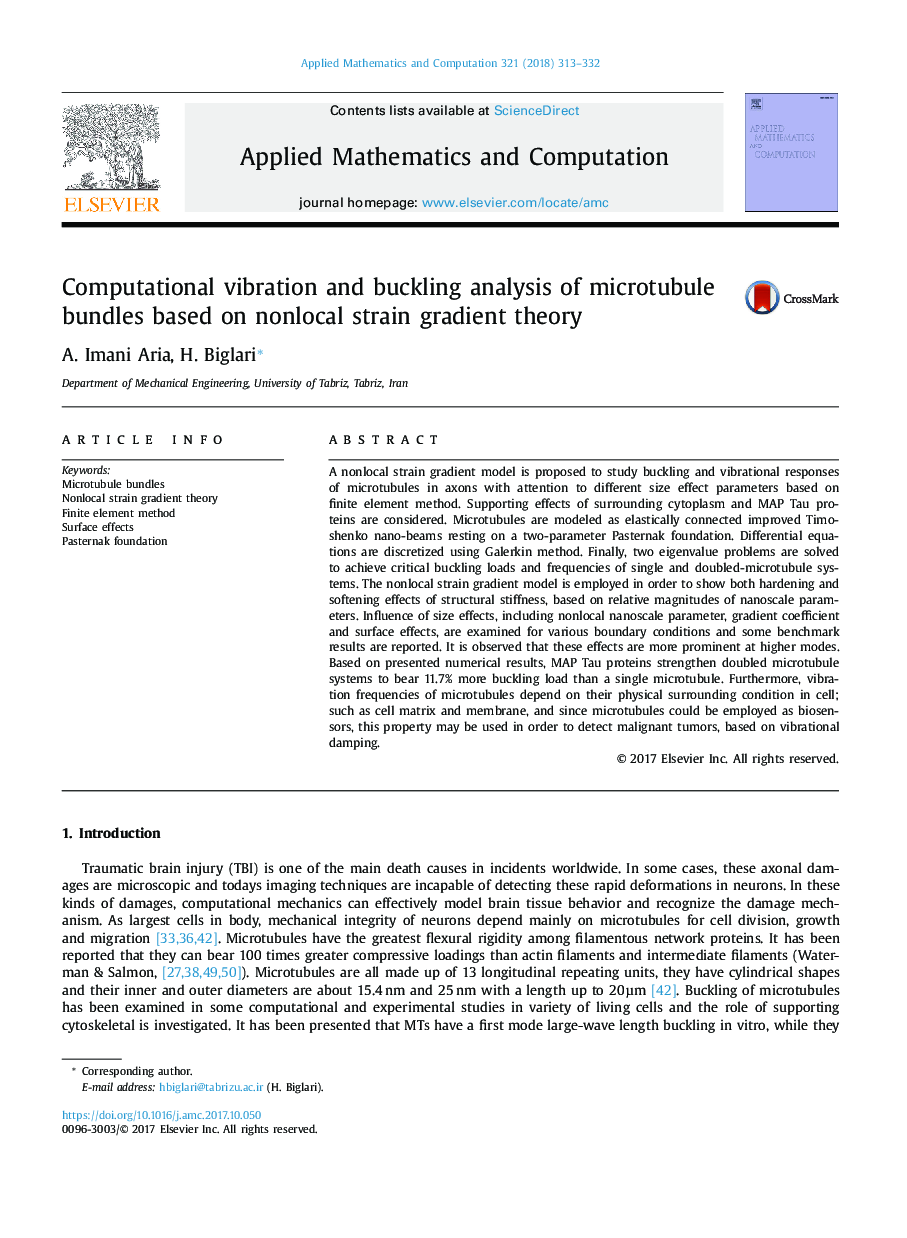| Article ID | Journal | Published Year | Pages | File Type |
|---|---|---|---|---|
| 8901325 | Applied Mathematics and Computation | 2018 | 20 Pages |
Abstract
A nonlocal strain gradient model is proposed to study buckling and vibrational responses of microtubules in axons with attention to different size effect parameters based on finite element method. Supporting effects of surrounding cytoplasm and MAP Tau proteins are considered. Microtubules are modeled as elastically connected improved Timoshenko nano-beams resting on a two-parameter Pasternak foundation. Differential equations are discretized using Galerkin method. Finally, two eigenvalue problems are solved to achieve critical buckling loads and frequencies of single and doubled-microtubule systems. The nonlocal strain gradient model is employed in order to show both hardening and softening effects of structural stiffness, based on relative magnitudes of nanoscale parameters. Influence of size effects, including nonlocal nanoscale parameter, gradient coefficient and surface effects, are examined for various boundary conditions and some benchmark results are reported. It is observed that these effects are more prominent at higher modes. Based on presented numerical results, MAP Tau proteins strengthen doubled microtubule systems to bear 11.7% more buckling load than a single microtubule. Furthermore, vibration frequencies of microtubules depend on their physical surrounding condition in cell; such as cell matrix and membrane, and since microtubules could be employed as biosensors, this property may be used in order to detect malignant tumors, based on vibrational damping.
Related Topics
Physical Sciences and Engineering
Mathematics
Applied Mathematics
Authors
A. Imani Aria, H. Biglari,
